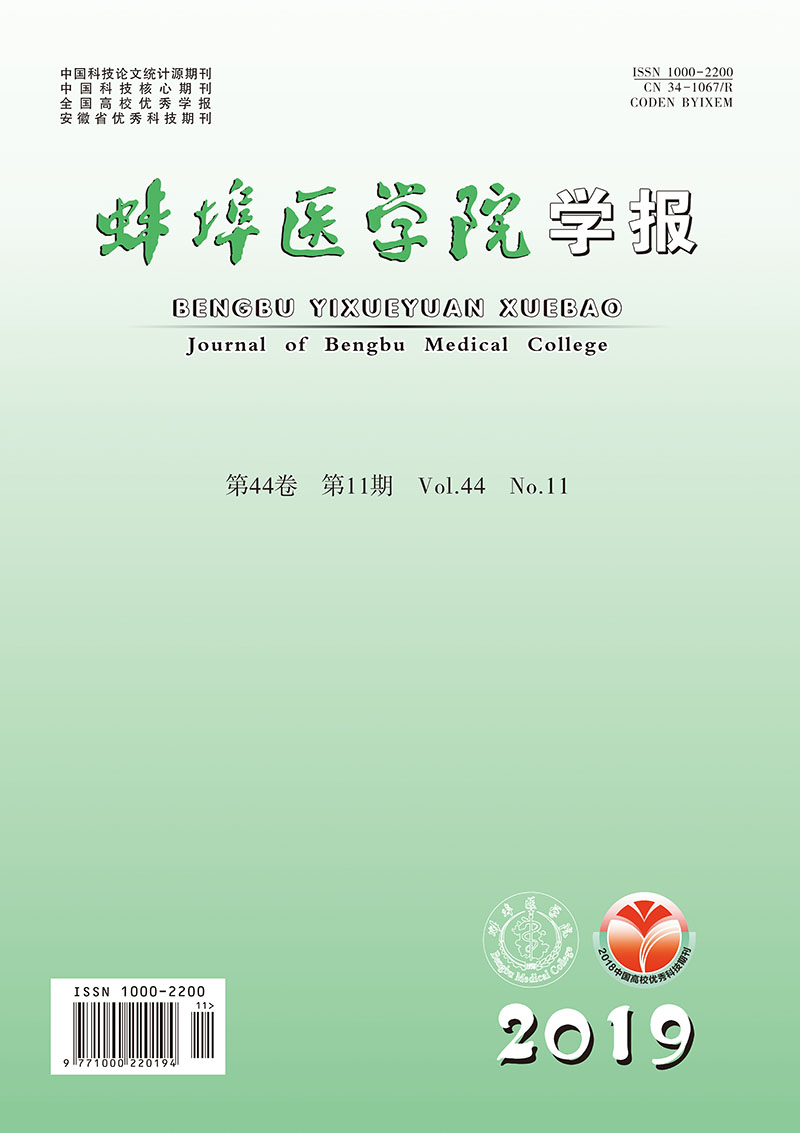-
高血压不仅是可改变心脑血管事件的危险因素,也是包括动脉粥样硬化在内的亚临床血管病变的危险因素[1-2]。即使在正常高值血压人群,颈动脉斑块的检出率也高于正常血压人群[3]。以往有关血压对动脉粥样硬化影响的研究多采用单次血压测量值,而动脉粥样硬化的发生和发展要数十年的时间,另外,血压也会随着年龄增加、生活方式的改变而发生变化,因而单次测量的血压值不可能反映生命周期中的真实血压情况,更不可能准确反映对动脉粥样硬化的影响。本文中的开滦研究(注册号HiCTR-TNC-11001489)是基于社区人群的队列研究,除每2年一次进行包括血压测量在内的全面心血管危险因素评估外,部分人群于2010年、2012年进行了2次颈动脉超声检查,为我们分析非高血压人群血压变化对新发颈动脉斑块的影响提供了机会。现作报道。
HTML
-
研究对象来自开滦研究队列[4-5],即2009年12月由首都医科大学附属天坛医院脑卒中临床实验和研究中心的人员根据2005年全国1%人口抽样调查所得的40岁以上全国人口性别和年龄的比例[6],以每2岁为一个年龄段在参加开滦集团2006-2007年度健康体检的101 510名职工中分层随机抽取观察对象,共抽取5 852人,符合入选标准的为5 440人。开滦研究队列纳入标准和排除标准分别见本课题已发表的文献[4-5]。本次分析纳入基线2010年非高血压、无斑块且资料数据完整的人群1 445例。
-
根据《中国高血压防治指南2010》,正常血压定义为收缩压<120 mmHg和舒张压<80 mmHg,同时既往无高血压及服用降压药史;正常高值血压定义为收缩压120~139 mmHg和/或舒张压80~89 mmHg,同时既往无高血压病史及服用降压药史[7]。根据2010-2012年血压变化情况,将非高血压人群分为:Ⅰ组,稳定为正常血压组;Ⅱ组,正常血压进展为正常高值血压组;Ⅲ组,正常高值血压降为正常血压组;Ⅳ组,稳定为正常高值血压组;Ⅴ组,正常血压或正常高值血压进展为高血压组。
-
流行病学调查内容、人体测量学指标[体质量指数(BMI)]、生化指标[低密度脂蛋白胆固醇(LDL-C)]检测见本课题组已发表的文献[4]。吸烟定义为近1年平均每天至少吸1支烟;饮酒定义为近1年平均每天饮白酒(乙醇含量50%以上)100 mL,持续至少1年以上。
-
观察对象于体检当日7:00~9:00进行血压测量,受试对象测量血压前30 min内禁止吸烟或饮茶、咖啡,背靠静坐15 min。采用经校正的台式水银血压计测量右侧肱动脉血压。收缩压读数取柯氏音第1时相,舒张压读数取柯氏音第5时相。连续测量3次,每次测量间隔1~2 min,取均值。
-
由从事超声工作5年以上且经过统一培训的超声医生对调查对象进行检查。采用PHILIPS公司HD-15彩色超声诊断仪,高频探头,频率5~12 MHz。调查对象于上午空腹进行颈动脉彩超检查,取仰卧位,头偏向检查侧对侧,探头沿着颈动脉走向,自下而上连续扫查,常规扫查双侧颈总动脉、颈总动脉分叉处、颈内、外动脉起始处,测量内中膜厚度(intima-media thickness, IMT),观察有无斑块并记录斑块的位置、大小和性质。一人操机,一人记录。两人核对后详细记录检查结果。
斑块定义为:局部隆起突出于动脉管腔>0.5 mm或超过环绕IMT值的50%或IMT>1.5 mm[8]。结果判断:由2名具有5年以上工作经验的超声医生依据上述标准对超声图像共同判断确认,并由不同的超声医生随机重查颈动脉超声并重新判断IMT及斑块结果,重测信度为97%。
-
采用方差分析、q检验、χ2检验、趋势χ2检验和logistic回归分析。
1.1. 研究对象
1.2. 分组
1.3. 资料收集
1.4. 血压测量
1.5. 颈动脉超声检测
1.6. 统计学方法
-
1 445例观察对象中, 正常血压人群502例,正常高值血压人群943例,年龄(48.38±6.87)岁。其中男606例(42%),女839例(58%)。5组间年龄、性别、吸烟、饮酒、BMI、空腹血糖、血脂及服用降糖药比例差异均有统计学意义(P < 0.01)(见表 1)。
分组 n 年龄/岁 男性 吸烟 饮酒 BMI/(kg/m2) 空腹血糖/(mmol/L) 总胆固醇/(mmol/L) LDL-C/(mmol/L) 服用降糖药 服用调脂药 Ⅰ组 284 46.83±5.48 68(23.9) 44(15.5) 32(11.3) 23.08±2.40 5.00±0.87 4.77±0.87 2.40±0.65 0(0.0) 3(1.1) Ⅱ组 184 48.99±6.68** 55(29.8) 35(19.0) 30(16.3) 23.85±2.67** 5.23±1.15* 4.80±0.84 2.43±0.21 9(4.9)** 1(0.5) Ⅲ组 238 47.27±6.25△ 119(50.0)**△△ 61(25.6)** 60(25.2)** 24.50±3.00**△ 5.32±1.02** 4.84±0.80 2.63±0.69**△△ 6(2.5)** 4(1.7) Ⅳ组 498 48.50±7.13**# 265(53.2)**△△ 169(33.9)**△△ 157(31.5)**△△ 24.63±2.92**△△ 5.39±1.12** 4.92±0.87 2.64±0.65**△△ 13(2.6)**△△## 3(0.6) Ⅴ组 241 50.59±7.62**△##++ 126(52.3)**△△ 76(31.5)**△△ 76(31.5)**△△ 25.98±2.70**△△##++ 5.38±1.03** 5.05±0.91**△# 2.53±0.72 6(2.5)**++ 0(0.0) 合计 1 445 48.38±6.87 633(42.0) 385(26.6) 355(24.6) 24.31±2.99 5.28±1.15 4.88±0.85 2.53±0.68 34(2.3) 11(0.8) F — 12.32 88.63▲ 40.16▲ 53.27▲ 38.41 7.18 4.29 9.19 160.17▲ 5.12▲ P — < 0.01 < 0.01 < 0.01 < 0.01 < 0.01 < 0.01 < 0.01 < 0.01 < 0.01 >0.05 MS组内 — 45.225 — — — 7.677 1.098 0.743 0.399 — — q检验:与Ⅰ组比较*P < 0.05, **P < 0.01;与Ⅱ组比较△P < 0.05, △△P < 0.01;与Ⅲ组比较#P < 0.05,##P < 0.01,与Ⅳ组比较++P < 0.01;▲示χ2值 -
2年后正常高值血压人群颈动脉新发斑块检出率(22.8%)高于正常血压人群(17.7%)(χ2=13.30,P < 0.01)。Ⅰ、Ⅱ、Ⅲ、Ⅳ、Ⅴ组新发斑块的检出率分别为18.9%(54/284)、14.3%(26/184)、17.1%(41/238)、24.2%(121/498)、26.4%(64/241);随着血压水平的增加,新发斑块的检出率呈增加趋势(χtrend2=12.07,P < 0.05)。
-
以血压变化分组为自变量,以是否有新发颈动脉斑块为因变量,调整性别、年龄、吸烟、饮酒、空腹血糖、服用调脂药、服用降糖药、血脂、BMI后,Ⅳ组、Ⅴ组发生颈动脉斑块的风险分别是Ⅱ组的2.007倍和1.823倍(P < 0.05)(见表 2)。
变量 分组 B SE Waldχ2 P RR 95%CI 血压变化分组 Ⅰ组 0.582 0.303 0.679 >0.05 1.789 0.987~3.241 Ⅱ组 — — — — 1.000 — Ⅲ组 0.293 0.324 0.821 >0.05 1.341 0.711~2.528 Ⅳ组 0.696 0.273 6.262 < 0.05 2.007 1.162~3.464 Ⅴ组 0.600 0.302 3.964 < 0.05 1.823 1.009~3.291 总胆固醇 0.372 0.110 11.511 < 0.01 1.450 1.170~1.797 年龄 0.065 0.011 35.967 <0.01 1.067 1.045~1.090 注:血压变化分组以Ⅱ组为参照, 调整性别、年龄、吸烟、饮酒、服用调脂药、服用降糖药、血脂、空腹血糖、BMI -
考虑到糖尿病、高血脂可能对结果产生影响,因此去除糖尿病、高血脂人群后分别进行敏感性分析,结果显示:以Ⅱ组为对照组,校正混杂因素后,Ⅳ组、Ⅴ组发生颈动脉斑块风险的RR值分别为1.774(0.859~3.004),1.397(0.704~2.668);1.653(0.846~2.910),1.414(0.781~2.621)(见表 3)。
人群 变量 分组 B SE Waldχ2 P RR 95%CI 非糖尿病 血压变化分组 Ⅰ组 0.175 0.145 0.596 0.428 1.326 0.702~1.383 Ⅱ组 — — — — 1.000 — Ⅲ组 0.017 0.298 0.006 0.725 1.162 0.646~2.108 Ⅳ组 0.192 0.175 1.194 0.274 1.774 0.859~3.004 Ⅴ组 0.100 0.132 0.562 0.456 1.397 0.704~2.668 非高血脂 血压变化分组 Ⅰ组 0.142 0.172 0.584 0.367 1.378 0.610~2.747 Ⅱ组 — — — — 1.000 — Ⅲ组 0.013 0.284 0.003 0.779 0.932 0.507~2.003 Ⅳ组 0.187 0.181 1.074 0.300 1.653 0.846~2.910 Ⅴ组 0.160 0.205 0.607 0.405 1.414 0.781~2.621 注:血压变化分组以第Ⅱ组为参照, 调整性别、年龄、吸烟、饮酒、服用调脂药(或服用降糖药)、血脂、空腹血糖、BMI
2.1. 研究人群基线资料
2.2. 不同血压变化组2012年新发颈动脉斑块检出情况
2.3. 不同血压变化组对新发颈动脉斑块影响的多因素logistic分析
2.4. 敏感性分析
-
血压从正常水平进展到高血压与心脑血管病增加相关[9]。颈动脉斑块作为动脉粥样硬化性疾病的亚临床代表指标[10],不仅对心脑血管事件有预测价值[11],而且可能是血压长期升高的结果。以往研究[12]多使用了单次测量的血压,血压的波动受年龄、基线血压水平、膳食习惯等多种因素影响,因此单次测量血压值不足以说明长时间的血压水平对颈动脉斑块的影响。观察血压变化对于颈动脉斑块的影响有助于提供更好的动脉粥样硬化危险分层,提高无症状个人未来心脑血管事件发生预警。
我们团队以前的横断面研究[3]结果显示,随着血压水平的升高,颈动脉斑块的检出率增加。本研究发现,稳定为正常血压、进展为正常高值血压组、正常高值降为正常血压组、稳定为正常高值血压组及正常血压或正常高值血压进展为高血压组2年后新发斑块的检出率分别为18.9%、14.3%、17.1%、24.2%和26.4%,结果中虽然稳定为正常血压组斑块检出率高于正常血压进展为正常高值血压组,但2组间差异无统计学意义,随着血压水平的增加,颈动脉斑块动脉的检出率仍呈增加趋势。王薇等[13]对1 331人基线(1992年)血压水平与10年后(2002年)颈动脉粥样硬化患病率的调查,结果显示,1992年和2002年两次检查血压均正常者,其颈动脉IMT增厚或颈动脉斑块的患病率最低(50.6%),两次检查均为高血压病人,其颈动脉IMT增厚或颈动脉斑块的患病率最高(74.6%),我们的结果与之一致。
以往研究[14]发现,正常高值血压不仅增加心脑血管疾病风险,同时是颈动脉斑块发生的危险因素[15-16]。我们的研究显示,调整混杂因素后,稳定为正常高值血压组新发颈动脉斑块的风险是正常血压进展为正常高值血压组的2倍。LEE等[15]研究发现正常高值血压病人颈动脉斑块的检出风险是正常血压者的1.45倍,HONG等[17]研究显示,调整混杂因素后,正常高值血压者颈动脉斑块发生风险是正常血压者的2.36倍,本结果与上述研究一致,表明血压在正常高值水平,已经明显增加颈动脉斑块形成的风险。动脉粥样硬化是一个逐渐演变和危险因素长期积累的病变过程,持续的血压正常高值状态可能增加颈动脉斑块的发生风险,因此将血压正常高值视为动脉粥样硬化危险分层的临界点,通过生活方式改变(如减重、改变膳食和体育锻炼)的非药物治疗来降低血压值[18],可降低动脉粥样硬化的风险,从而减少不良事件的发生。
在影响颈动脉新发斑块的多因素logistic回归中,调整混杂因素后,与正常血压进展为正常高值血压组相比,进展为高血压组新发颈动脉斑块的风险增加82%。王薇等[13]对北京地区队列人群10年(1992-2002年)血压的变化与颈动脉粥样硬化研究中显示,与稳定为正常血压相比,10年内进展为高血压人群新发颈动脉斑块的风险增加58%。XIE等[19]研究结果显示,基线非高血压人群中,收缩压的变化5年后新发颈动脉斑块风险是基线收缩压的1.01倍,这些结果均提示血压的变化增加颈动脉斑块的发生风险。抗高血压药物治疗可降低亚临床动脉硬化的过程[20],有效低控制血压,脑卒中的发病率下降50%[21]。早期适度的血压下降和靶向减少高血压病人能减少或延缓颈动脉粥样硬化的发展过程,降低未来心血管疾病的负担。
考虑到合并症等混杂因素对颈动脉斑块的影响,我们删除了服用降压药、降糖药人群,进一步进行敏感性分析,得出结果发现血压、年龄、总胆固醇与颈动脉斑块发生风险呈上升趋势,但未表现出统计学意义。表明除了血压波动外,血糖、血脂异常与颈动脉斑块的发生有协同作用。在1590名北京大学社区人群调查研究[19]发现,除了收缩压5年变化外,包括血脂在内的传统心血管危险因素与新发颈动脉斑块密切相关。中老年人群中正常高值血压合并其他危险因素病人10年心脑血管疾病风险≥40%[22]。基于我们的结果,建议对糖尿病、高血脂病人应积极控制血压,并进行降糖、调脂治疗,以降低颈动脉斑块的发生,及早控制,及早收益,从而减少动脉硬化性心血管疾病的负担。






 DownLoad:
DownLoad: